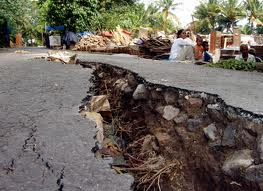Probablistic Seismic Hazard Analysis

Description
Probabilistic Seismic Hazard Analysis (PSHA) is a quantitative method used to assess the likelihood of ground shaking at a specific location due to potential earthquakes. PSHA accounts for the uncertainties in the source, path, and site characteristics, resulting in a comprehensive understanding of the seismic hazard. It is widely used in engineering practice and in the development of seismic design codes for buildings, bridges, and other critical infrastructure.
In summary, PSHA involves the following key steps:
-
Seismic source identification: Identify and characterize the seismic sources in the region of interest, such as faults, fault systems, or distributed seismicity zones. This includes information on their locations, geometries, and potential magnitudes and frequencies of earthquakes.
-
Earthquake recurrence model: Develop models to estimate the frequency-magnitude relationship for each seismic source. This involves determining the earthquake recurrence parameters, such as the Gutenberg-Richter b-value and the maximum possible earthquake magnitude.
-
Ground motion prediction equations (GMPEs): Select appropriate GMPEs to estimate the ground motion at the site of interest as a function of earthquake magnitude, distance, and site conditions. GMPEs are empirical relationships derived from observed ground motion data and account for the attenuation of ground motion with distance and site-specific amplification.
-
Integration and hazard calculation: Integrate the information from the seismic source, earthquake recurrence models, and GMPEs to calculate the probability of exceeding a certain level of ground motion at the site over a given period. This is typically expressed in terms of hazard curves, which show the annual probability of exceedance versus ground motion intensity (e.g., peak ground acceleration or spectral acceleration).
-
Deaggregation and uncertainty analysis: Analyze the contributions of various sources, magnitudes, and distances to the overall hazard, and assess the uncertainties in the PSHA results. This helps in understanding the dominant factors influencing the seismic hazard and guiding further studies or risk mitigation strategies.
The outcome of a PSHA is typically used to develop design ground motions or seismic zoning maps for engineering purposes, to assess the seismic risk for existing structures, and to inform land-use planning and disaster mitigation policies. PSHA provides a comprehensive and probabilistic assessment of seismic hazard, which is essential for designing structures to withstand potential earthquake forces and minimize the risk of collapse or significant damage during an earthquake.
Calculation Preview
Full download access to any calculation is available to users with a paid or awarded subscription (XLC Pro).
Subscriptions are free to contributors to the site, alternatively they can be purchased.
Click here for information on subscriptions.





